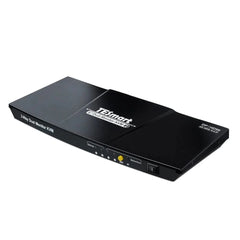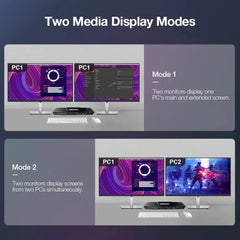What is EDID?
At present, monitors support higher and higher video performance, with high refresh rate gaming screens like 2K 144Hz, and high-resolution monitors that support 4K. The ultimate challenge is 8K, such as Samsung's Neo QLED series TV.
So, when we use a monitor, how do we get the best performance from the input source, such as a laptop, desktop, DVD, PS, Xbox, etc., on the monitor? For example, when a monitor supports a maximum display of 4K 60Hz, how do two devices communicate when connected to a computer host? The answer is closely related to EDID, which we will introduce today.
EDID stands for "Enhanced Display Identification Data," which is a piece of data that contains information about the monitor. It records all the information about the monitor, such as the manufacturer, brand and model of the monitor, serial number, production date, etc. For example, for Samsung's Neo QLED TV mentioned above, the manufacturer "SAMSUNG" will be recorded in the EDID in the form of three letters, "SAM," and the brand, model, and unique serial number of the monitor will also be recorded.
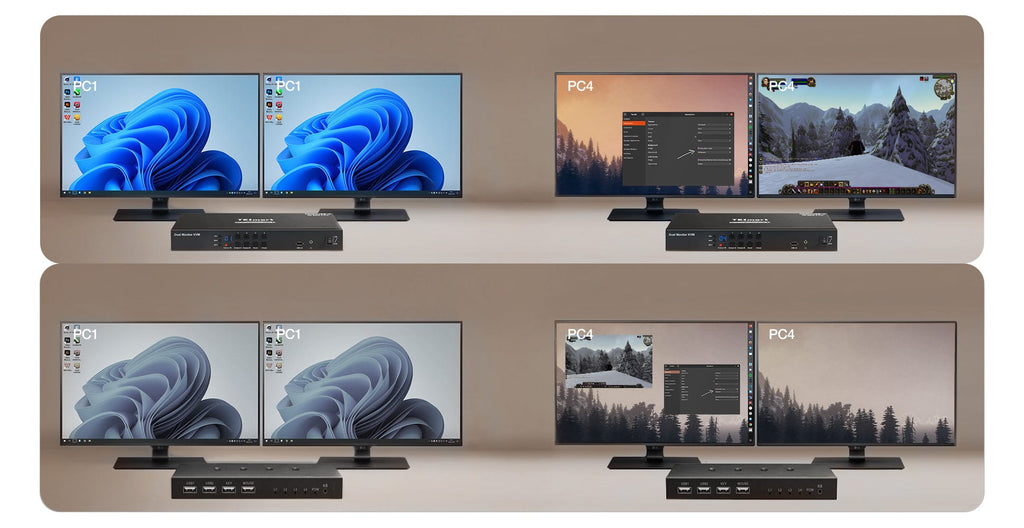
The relevant parameters recorded for video are mainly the resolution, refresh rate, color format, aspect ratio, size, Gamma value, supported audio format, etc. Because of this information, when the input source and the video port of the monitor are connected, common video ports include HDMI, DP, USB-C, DVI, VGA, etc., the input source device reads the EDID information from the display device. The input source will read and analyze this data and then transmit an appropriate image to the monitor based on the contents of the EDID. This is the state where the input source is directly connected to the monitor.
How is EDID Transmitted in KVM Switches to Ensure Accurate Display?
When connecting the input source, middle device, and monitor, such as a KVM switch, how are the relationships between the three defined? How is EDID transmitted, and how can the monitor still display a suitable and accurate image when passing through an intermediate device?
EDID is transmitted in a "monitor-->middle device-->input source" direction through two links: "input source-middle device" and "middle device-monitor." The middle device has three methods to handle the received EDID from the monitor. Method one is to directly transmit the EDID to the input source, which analyzes the data to ensure compatibility between devices. Method two replaces the EDID received from the monitor with the intermediate device's pre-programmed EDID to ensure proper display, regardless of compatibility. Method three modifies specific EDID data, such as audio data, before transmitting it to the input source.
TESmart KVM Switch Recommendation
TESmart offers a wide range of KVM switches with different models, features, and specifications to meet various needs. Among the products recommended in this article are the 4 Port Dual Monitor HDMI KVM Switch - HKS0802A1U-USBK, and 2 Port Dual Monitor HDMI+DP KVM Switch - HDK0402A1U-USBK.
TESmart 4 Port Dual Monitor HDMI KVM Switch - HKS402-E23: With support for up to 4K 60Hz resolution and dual monitors, the TESmart switch provides an unparalleled level of visual clarity and fidelity. The EDID feature ensures that the switch automatically detects and adjusts to the optimal display settings for each monitor, ensuring that every image is displayed in the highest quality possible.


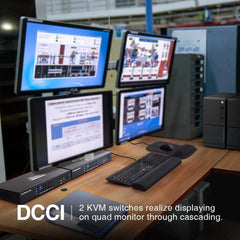
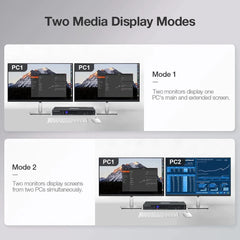
TESmart 2 Port Dual Monitor HDMI+DP KVM Switch - HDK202-E23: The ultimate solution for users who want to switch between multiple devices with ease. This switch supports 4K resolution at 60Hz, ensuring a crystal-clear display for all your devices. But what sets this KVM switch apart is its EDID feature, which automatically recognizes the connected display and optimizes the resolution and refresh rate for the best possible viewing experience. Say goodbye to the hassle of manually adjusting display settings every time you switch devices.
